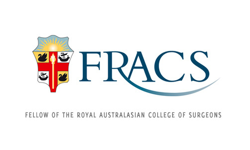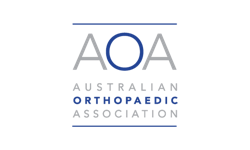
Procedures
Total Hip Replacement
The most common cause of chronic hip pain and disability is arthritis.
Hip pain is debilitating and is responsible for a significant reduction in quality of life. Osteoarthritis, rheumatoid arthritis, and traumatic arthritis are the most common forms of this disease. In these conditions, the smooth lubricating surface of the joints wear away leaving painful bone on bone articulation.
In a total hip replacement the damaged bone and cartilage is removed and replaced with prosthetic components, thereby allowing for a smooth joint movement minimising pain.
Mr Sydenham will organise a personalised treatment plan based on your consultation. The nonsurgical and surgical treatment options will be discussed together with the risks and benefits of each treatment method.
Numerous surgical approaches are possible for performing a total hip replacement. Mr Sydenham is trained in the three most common approaches and will tailor them to your specific situation. They include the minimally invasive anterior approach that does not require muscles to be cut during the surgery therefore enhancing early recovery.
Shoulder Instability
The shoulder is the most moveable joint in your body. However it is also vulnerable to instability with trauma.
Once a shoulder has dislocated, it is common to have repeat episodes of instability.
Shoulder instability is often first treated with nonsurgical options with intense physiotherapy and rehabilitation. If these options do not relieve the pain and instability, surgery may be required. This may be in the form of arthroscopic keyhole capsular labral repair or open coracoid transfer.
Mr Sydenham will discuss these options with you once a detailed consultation has taken place.
Rotator Cuff Repair
A rotator cuff tear is a common cause of pain and disability and significantly affects your day-to-day quality of life. Degeneration and traumatic are the two main causes of rotator cuff tears. Mr Sydenham will determine via examination and investigations which one you may have.
The goal of any treatment is to reduce pain and restore function. Mr Sydenham may recommend surgery if your pain and function does not improve with non-surgical methods. This is usually in the form of repairing the tendon with surgical anchors to the bone.
Arthroscopic keyhole repair is the most minimally invasive method of repair and the procedure Mr Sydenham specialises in.
After a thorough consultation the options of non-surgical and surgical treatments will be presented together with the risks and benefits of each method. This information will be tailored to your individual health needs.
Total Shoulder Replacement
Several conditions can cause shoulder pain and disability, and lead patients to consider shoulder joint replacement surgery.
Degenerative joint disease such as osteoarthritis is the most common arthritis requiring shoulder replacement surgery. Other causes are rheumatoid arthritis, post-traumatic arthritis, and post infection.
A particular cause known as cuff tear arthropathy arises from chronic rotator cuff tendon tears. This requires unique specialised surgical management.
During your personalised consultation, Mr Sydenham will discuss your treatment methods together with the risks and benefits of each treatment method. This may involve surgical and non-surgical methods that Mr Sydenham has extensive international training in.
Total Elbow Replacement
Although elbow joint replacement is much less common than shoulder, hip and knee replacement, it is just as successful in relieving joint pain and returning people to activities they enjoy.
Arthritis is the main cause of a painful and stiff elbow joint requiring treatment. However other causes of disability lead patients to consider elbow joint replacement surgery.
Mr Sydenham will discuss these causes and treatments together with the relevant risks and benefits based on your individual healthcare needs.
Elbow Arthroscopy
Elbow arthroscopy is a surgical procedure that allows Mr Sydenham to view the elbow joint utilising a minimally invasive keyhole technique. Arthroscopy is used to diagnose and treat a wide range of elbow problems. Such conditions include removal of inflamed synovial tissue, trimming of damaged articular cartilage, removal of loose fragments of bone or cartilage and treating elbow infections.
Total Knee Replacement
Similar to other joints in our body, knees can be worn out because of many conditions. The most common cause of chronic knee pain and disability is arthritis, principally osteoarthritis. Other common causes are rheumatoid and post traumatic arthritis. The cartilage that cushions the bones of the knee softens and wears away. The bones then rub against one another, causing knee pain and stiffness.
After a detailed and personalised consultation, Mr Sydenham will discuss your management options and determine if surgery is needed. Non-surgical and surgical options will be presented, discussing the risks and benefits of each treatment. Once non-surgical treatments have been exhausted then discussion about total knee replacement will be considered.
Total knee replacement is surgery involved in removing the problematic diseased surfaces of the bone and replacing them with prosthetic components designed to reduce pain and improve function of the knee joint.
Knee Arthroscopy
Knee arthroscopy is a surgical procedure that allows Mr Sydenham to view the knee joint utilising a minimally invasive keyhole technique. Arthroscopy is used to diagnose and treat a wide range of knee problems. Such conditions include
Removal or repair of a torn meniscus
Reconstruction of a torn anterior cruciate ligament
Removal of inflamed synovial tissue
Trimming of damaged articular cartilage
Removal of loose fragments of bone or cartilage
Knee sepsis (infection)
Trauma
Mr Sydenham has extensive training in treating and managing orthopaedic trauma. Unfortunately fractures and broken bones occur commonly and significantly impact our quality of life. Mr Sydenham treats patients of all ages and most fracture patterns, both in private and public hospital situations.
Due to the nature of emergency Mr Sydenham will make the every effort to see his patients within the next 24 hours to commence treatment of the fracture.





